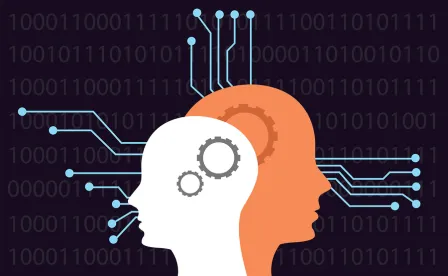While the phrase has different meanings depending on the context, “big data” typically refers to data that is so large in volume that computers, rather than traditional methods of analysis, are necessary to understand it. “Big data analytics,” a phrase often used synonymously for the actual data and its computerized analysis, encompasses data’s volume, collection speed, type collected, and how best to decipher it. Marketing departments have long used big data analytics to target potential customers with pinpoint accuracy. Human resources (“HR”) departments increasingly consider whether and how to incorporate big data tools into their hiring processes.
The promise offered by big data analytics, and certainly the vision sold by many of the vendors that specialize in selling big data tools for application in the HR context, includes better outreach to potential applicants, increased efficiency in the hiring process, fewer people hours spent combing through resumes, and the selection of more qualified and better-matched candidates. The market includes a variety of analytical tools for these purposes, such as algorithms that scan resumes to match candidates to jobs by simulating human hiring tendencies, measure candidates on personality traits deemed critical for success in the job, and assess the cognitive abilities of each candidate against those of high-performing incumbents. Vendors market their big data tools as predictive algorithms that will allow their clients to hire the right people by using data that maps the applicant’s profile onto the company’s available openings. Ultimately, by hiring the “right” people, companies will improve productivity, increase retention, and spend fewer resources on employee selection.
Many of these big data tools use artificial intelligence (“AI”) or machine learning to help select attributes and candidates for hiring. Machine learning takes the baseline algorithms that make selection decisions and improves upon them by learning from “mistakes.” For example, a job role might change organically such that an old job description might not adequately assess the skills needed by an applicant, but an AI algorithm trained to mine the data of current employees in the role might find character traits that help “define” the skills needed to succeed in the role. By taking these character attributes of current employees into account as a machine learns, hiring decisions potentially improve as the selection algorithm changes.
Before blindly adopting big data analytics, however, employers must be aware of the potential risks. For example, an employer cannot easily “look under the hood” to see precisely how the selection algorithm is operating, partially because vendors consider the algorithm to be proprietary and confidential, and partially because the vendors themselves do not know exactly how the algorithm has changed as a result of machine learning. Without the ability to assess what the selection algorithm is doing, employers may have difficulty determining which factors, if any, are a potential source of bias. Additionally, in the event of litigation involving an AI algorithm’s selection criteria, the employer may be unable to produce in discovery sufficient evidence of the decision-making process. Indeed, the algorithm that the employer is required to defend might be different from the version that was used at the time of the hiring decision. Oftentimes, even the vendor/data scientist who created the algorithm does not know what the algorithm is doing.
One can argue that big data analytics can lend consistency to the hiring process, reducing the subjectivity in selection decisions and potentially limiting the likelihood of a disparate treatment discrimination claim. Nevertheless, employers should be careful that the algorithm does not incorporate intentionally discriminatory factors. Moreover, employers should be aware that the increased consistency and objectivity also increases the potential for disparate impact claims. If the AI-influenced decision results in a statistically significant adverse impact on a group of candidates possessing one or more protected characteristics, employers may be more vulnerable to class or collective action allegations.
Big data analytics also presents special challenges related to its impact on persons with disabilities. Where a person’s ability to use the technology constitutes an impediment to a proper assessment, the analytical tool may lead to claims of discrimination. Further, federal law precludes an employer from obtaining information about a candidate’s medical history or condition before making a hiring decision. To the extent a big data tool collects information about medical history or causes candidates to disclose such information at an inappropriate time, the tool may violate discrimination law.
While a complete machine takeover of the hiring process remains unlikely, big data analytics continues to be an attractive tool to assist HR departments. To that end, employers should consider the following practical steps to safeguard against machine learning run amuck in the hiring process:
- Conduct a thorough due diligence of the vendor and its product(s), ask to view the algorithm and its different permutations, and seek indemnification to limit liability in the selection process.
- Conduct a periodic statistical sampling of the AI-selected applicant pool and candidates through an adverse impact analysis.
- Implement appropriate data security measures, such as determining how relevant data will be hosted and identifying a core group of individuals within HR who will have access to that data.
- Understand document retention obligations so as to properly comply with Equal Employment Opportunity Commission (“EEOC”) guidance, U.S. Department of Labor (“DOL”) regulations, and state law.
- Determine what to do with the data and how to access it, if and when the agreement with the vendor ends, or litigation occurs.
These steps are just a few of the considerations that employers should take into account when evaluating big data tools. For ultimate success, employers should be sure to involve all stakeholders, including business managers, HR, and legal counsel, in determining whether to adopt these tools.





 />i
/>i
